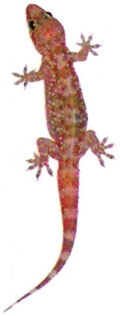The Lizard That Almost Killed a Kid
I remember “spiny lizards” from my childhood as these huge scaly lizards as long as my arm that took two hands to hold. For young lizard hunters in my Tucson, Arizona neighborhood, these were the big game trophies. I caught one once, but don’t remember the details. I just remember holding it squirming in my hands and being in awe of its size. The lizards I was used to holding were barely bigger than my hand. I was six, maybe seven years old at the time.
One nearly killed a kid. Not directly, but as a result of the kid trying to catch it. I don’t remember the kid’s name, so I’ll just call him “Joe.”
Spiny lizards are arboreal, which means they spend most of their time climbing up and down trees. In our neighborhood there were a lot of trees, but out in the desert itself – which was right across the street from us – there were mainly tall, green saguaros cactus and telephone poles. Yes, telephone poles. Spiny lizards seemed to be drawn to them for some reason, and when walking out in the desert and passing a telephone pole there was a good chance a spiny would race across the ground and  go scuttling up one, keeping the pole between you and it.
go scuttling up one, keeping the pole between you and it.
I guess Joe saw an extra attractive specimen one summer afternoon on a telephone pole down the block, and determined to catch it he began scaling the pole itself. I remember looking down the street and seeing him climbing that pole, and knew instantly what he was after. He was holding tightly with arms and legs, slowly making his way straight up. The lizard, sensing pursuit, continued further toward the top. Joe was an older kid, and two of his friends were down on the ground yelling up encouragements. I hung back because one of the kids was a bully and I was afraid of him.
The spiny was panicking, you could tell by the way it kept going around the pole several feet above him. Its defense was to stay hidden on the opposite side of the pole from a predator, but this predator was on all sides of the pole and was slowly making its way up. The lizard knew it could only go so far, and knew it was trapped. It went to the top and couldn’t go any further, and didn’t seem to like being at the top either, because it kept coming back down and skittering to and fro around the pole. Joe, sensing victory, continued bravely upward despite him being a good 30 feet off the ground.
Remember, we were all just kids. We didn’t know anything about electricity. I don’t think anyone had bothered to tell us not to climb telephone poles, especially ones which were shared by power lines.
Joe was trying to get past some of the cables and he touched one, or touched something that was touching one. His whole body vibrated and he was slamming his face repeatedly – and rapidly – into the wood of the pole. I didn’t know what was happening and remember thinking how funny it looked. Then mercifully he broke contact with the current and started sliding down the pole, his body rigid, in a kind of jerking fashion. About ten feet above the ground his arms and legs gave out and he dropped and landed flat on his back on the hard desert dirt.
Joe didn’t get up. He was just lying there on his back. His friends dithered for a moment, then one ran to get an adult. About ten minutes later there was a crowd of people and an ambulance came – the first one I’d ever seen – and they hustled him off to the hospital.
Joe was lucky, because he lived. He didn’t have any broken bones or anything. The lizard got away. Triggered by this event, my parents lectured me on the dangers of climbing telephone poles.
I was in my late 30’s when I finally caught my second spiny lizard. It was out in Texas, and my older daughter and I were in a North Dallas park when I spotted one on a tree. It didn’t move, convinced it was invisible because of its camouflage. I circled around to the other side of the tree, and had my daughter tell me how far it was from the ground. Then in a lightning move I reached blindly around the tree and grabbed. Got it first try.
They’re not as big as I remember, of course, but they’re a lot bigger than their little cousins (the common “blue-belly” or Western Fence Swift) which my kids were used to from California. It was a female, and very lively. We kept if for a day or so and then let it go.
From Tales of the Lizard Hunter
By Jerry J. Davis
